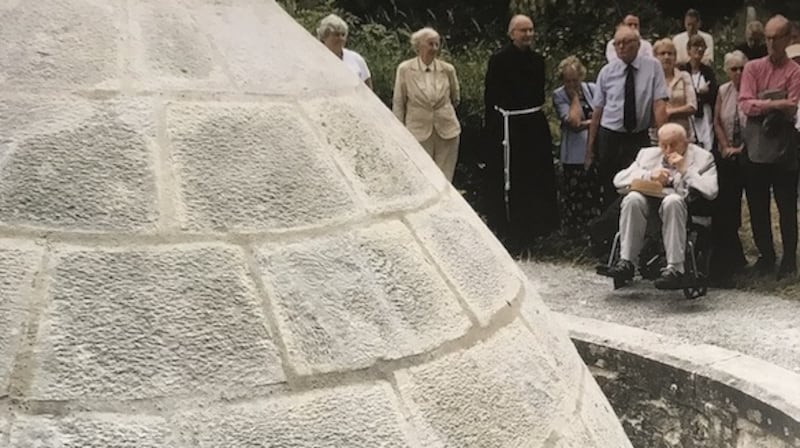When Co Westmeath landlord Robert Cooke died in 1835, his eccentric son Adolphus had his remains interred in a beehive-shaped mausoleum in the graveyard of St John the Baptist’s Church in Delvin, because he firmly believed that his father would be reincarnated as a bee. Although the church is now a ruin, this bizarre tomb has been fully restored by the Portadown-based Follies Trust, working with Westmeath County Council heritage officer Bernadette Solon.
A new book, Fifteen Years of The Follies Trust, celebrates its achievements in rescuing follies of one sort or another throughout Ireland, since it was set up in 2006 by the formidable Primrose Wilson, current president of the Ulster Architectural Heritage Society. For her, follies are "joyful little buildings that aim to please". And Ireland "has more follies to the acre than anywhere else in the world", as the late Mariga Guinness, co-founder of the Irish Georgian Society, once observed.

Mariga herself was interred beneath the enormous Connolly Folly (1740), half-way between Castletown House and Carton House in Co Kildare, after she died from a heart attack on board the ferry from Holyhead to Dún Laoghaire in May 1989, at the age of 56. That very particular folly, designed by Richard Castle, with multiple arches topped by an obelisk, rises to a height of 42 metres. It was restored by the IGS in the early 1960s and is now looked after by the Office of Public Works.
A pioneering drone survey in 2017 showed that the urn on top was 'held in place only by a single strut'
The well-illustrated Follies Trust book details its success in restoring such landmarks as the elegant Beresford Obelisk (1840), near Limavady, Co Derry, which had been on Northern Ireland’s Buildings at Risk Register, and the fluted Doric column in Liscannor, Co Clare, erected in 1857 to commemorate local MP Cornelius O’Brien, who had opened up the Cliffs of Moher. A pioneering drone survey in 2017 showed that the urn on top was “held in place only by a single strut”.
Over the past 15 years, the trust’s small team of volunteers has raised more than £650,000 (€770,000) to work on 30 follies most in need of help, as its chairman (Ms Wilson shuns being called “chairperson”) notes in her foreword. “As well as follies, we have worked on grottoes, mausolea, monuments, water fountains, bathing huts and countless other unusual but overlooked little buildings which enrich our collective heritage” – in the process helping to sustain traditional building skills.
‘Noteworthy constellation’
In its early years, the trust had to battle for funding to restore a trio of fine mausolea in Knockbreda Churchyard on the outskirts of Belfast, which had been damaged by water ingress and invasive vegetation. Commissioned by wealthy merchants in the 18th century and described by architectural historian Maurice Craig as "a noteworthy constellation of very elegant neo-classic specimens, some with a touch of oriental fantasy", they now stand as pristine as they were when built.
In Tullylish, Co Down, the trust restored two linen watch houses – 19th century stone security huts designed to deter thieves from stealing bleached linen while it was stretched out in surrounding fields. Other curiosities that received its attention include Lord Limerick’s conical follies in Tollymore, also in Co Down, as well as the eye-catching Lawrencetown Folly in Co Galway and an extremely rare pair of stone pyramid mausolea in Maudlins, near Naas, Co Kildare.
Even more unique is the cast-iron Dennis Mausoleum in Clonbern, Co Galway (1863), where the first master of the Galway Blazers Hunt was interred. Damaged by a storm that toppled its decorative draped urn finial, cornice and railing, this “truly remarkable and bizarre monument” – as the National Inventory of Architectural Heritage notes – might have been left to rot, like so many others, without the timely intervention of Primrose Wilson and her dedicated team.











